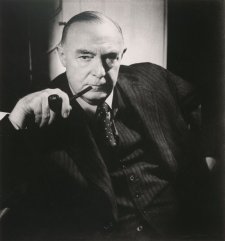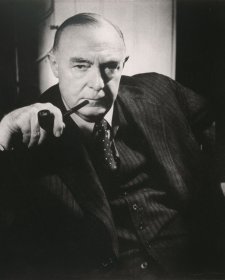- About us
- Support the Gallery
- Venue hire
- Publications
- Research library
- Organisation chart
- Employment
- Contact us
- Make a booking
- Onsite programs
- Online programs
- School visit information
- Learning resources
- Little Darlings
- Professional learning
Douglas Annand (1903–1976), graphic designer and artist, moved to Sydney from Brisbane in 1930. Two years later he was joint winner of a competition to design a poster commemorating the opening of the Sydney Harbour Bridge. Before long he was Australia's most celebrated advertising designer, his projects including the ceiling of the Australian Pavilion at the Paris exposition in 1937, and the overall design of the Australian pavilion at the New York World's Fair in 1938–1939. During the Second World War he worked as an RAAF camouflage artist in Queensland and the Northern Territory; in 1944 he held his first solo exhibition at David Jones’ Gallery in Sydney. He created textile and mural designs for Jantzen and Holeproof, and covers for Meanjin and The Home. In 1938 he designed three new coins, including the Australian 'kangaroo' penny, and later advised on the design of the new decimal currency in the 1960s. He made murals for the P&O headquarters in Sydney, the office of radio station 2UE radio station, Wilson Hall at the University of Melbourne and the Mildura Base Hospital; in 1966, he moved into more architectural forms with large glass structures for CSR in Sydney. He made a 16-metre 'comet' mural for the Arrivals Hall at Sydney International Airport in 1970. Annand won the Sulman Prize for his murals in 1941, 1947 and 1951. Many of his murals have been demolished, but those that have been preserved, such as the Dalton Building Café mural at the University of New South Wales (1958), are recognised as essential expressions of Australian modernism.
Gift of Danina Dupain Anderson 2017. Donated through the Australian Government's Cultural Gifts Program.
Danina Dupain Anderson (47 portraits)



On one level The Companion talks about the most famous and frontline Australians, but on another it tells us about ourselves.



Johanna McMahon revels in history and mystery in pursuit of a suite of unknown portrait subjects.



Gael Newton delves into the life and art of renowned Australian photographer, Max Dupain.